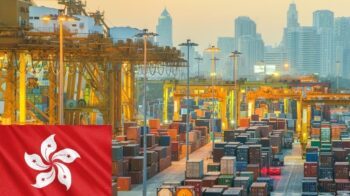By: Megan Mohler, Associate Attorney, Braumiller Law Group
On July 14, 2020, President Trump issued an executive order (EO) that stripped Hong Kong of its different and preferential treatment from mainland People’s Republic of China (PRC or China). In accordance with the 1984 Sino-British Joint Declaration, the city of Hong Kong’s sovereignty was handed over to mainland China from the U.K. in 1997, but as an autonomous city with a largely separate legal and economic system from mainland China. In 1992, the United States passed the United States-Hong Kong Policy Act of 1992, which allowed the U.S. to continue to treat Hong Kong separately from mainland China in matters of trade and economic controls after the 1997 handover. Until now.
At the end of June, the PRC imposed a sweeping national security law over Hong Kong that allowed China to take broad security measures in response to Hong Kong actions against the PRC government. The law also gives Beijing broad authority to set up a security presence in the once-autonomous city to police political crimes against mainland China. The security law seems to strip Hong Kong of its separate legal and economic system and its people of certain civil liberties. As a result, the executive order signed on July 14, 2020 “suspend[s] or eliminate[s]” Hong Kong’s special treatment by the U.S. Also signed into U.S. law on July 14 is the Hong Kong Autonomy Act, which imposes sanctions on foreign individuals and entities that contribute to China’s failure to preserve Hong Kong’s autonomy.
What does this mean for the Industry?
The U.S. has now increased its export restrictions on sensitive technology to Hong Kong, equal to its restrictions on mainland China, and will sanction individuals and financial institutions that in any way facilitate China’s departure from the 1984 Sino-British Joint Declaration. Previous license exceptions for exports to Hong Kong have now been suspended, but there is a special carve out for certain defense-items that were previously granted export authorization. However, for the purposes of export, Hong Kong is now treated equally to China under the International Traffic in Arms Regulations (ITAR), meaning there is a presumption of denial for export license requests where the end-user is a Hong Kong person.
As far as imports are concerned, the big worry on everyone’s mind was the treatment of Hong Kong imports by Customs under the executive order, considering that current Chinese imports are subject to additional Section 301 duties. On July 24, an administration official made clear that the EO does not provide for additional duties on imports of products from Hong Kong because the Section 301 statute is not referenced in the order, but the EO specifically cites the country of origin marking statute as affected. Going forward, products of Hong Kong must be marked with some variation of “Made in China.” The marking can specify Hong Kong, but also should clearly mark that the product is from China.
The EO gave U.S. agencies 15 days, or until July 29, 2020, to implement policies relating to the order, but many practical effects are still unknown as the industry awaits official guidance from CBP and BIS.

























